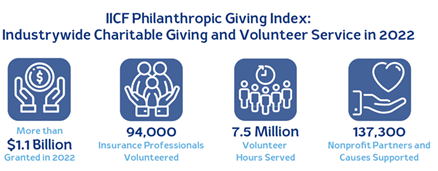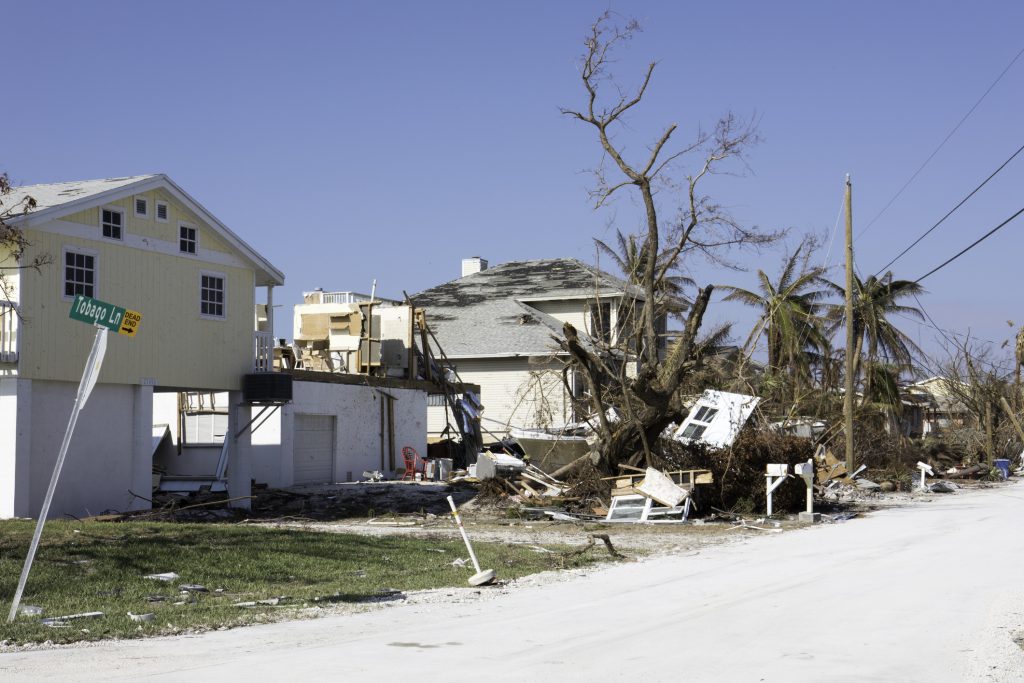
By Loretta Worters, Vice President – Media Relations, Triple-I
The insurance industry contributed more than $1 billion to charitable endeavors in 2022, according to an independent review by the Insurance Industry Charitable Foundation (IICF).
Alongside the industry’s charitable giving, the IICF Philanthropic Giving Index revealed other community contributions in 2022, demonstrating the industry’s dedication to giving and volunteerism:
- 137,300 nonprofit partners and causes received support
- 7.5 million volunteer hours were served
- 94,000 insurance professionals volunteered
These numbers were announced on November 15, National Philanthropy Day, which is celebrated by fundraising professionals, government leaders, foundations, businesses, individual donors and others who wish to honor all the contributions philanthropy has made.
“Philanthropy Day provides an opportunity to reflect on the meaning of giving and all that the insurance industry has accomplished,” said IICF Vice President and Chief Program Officer Elizabeth (Betsy) Myatt. With research support from Triple-I, IICF reviewed data from 120 companies, representative of all sectors of the insurance industry, for this snapshot of industrywide charitable giving and supporting data.
“These collective philanthropic findings provide the industry with a remarkable numeral representation of the generous charitable giving and support by our many insurance businesses,” said Myatt, who is also the Executive Director of the Northeast Division of IICF.
IICF is a nonprofit that unites the shared strengths of the insurance industry to help communities and enrich lives through grants, volunteer service, and leadership. Established in 1994, it has served as the philanthropic voice and foundation of the industry for close to 30 years, contributing $47 million in community grants along with over 337,000 volunteer hours by more than 115,000 industry professionals. IICF reinvests locally where funds are raised, serving hundreds of charities and nonprofit organizations for maximum community impact.

Among the many charities IICF awards grants to are:
- KiDS NEED MoRE, a 501(c)(3) nonprofit charitable organization dedicated to enhancing the lives of children and families coping with life-threatening illnesses and traumatic interruptions of the normal childhood experience;
- 180 Turn Lives Around, which provides programs and services for victims of domestic and sexual violence;
- Boston Scores, helping to break barriers to advance racial and gender equality;
- National Alliance on Mental Illness, whose mission is to help families and individuals affected by mental illness build better lives through education, support and advocacy.




